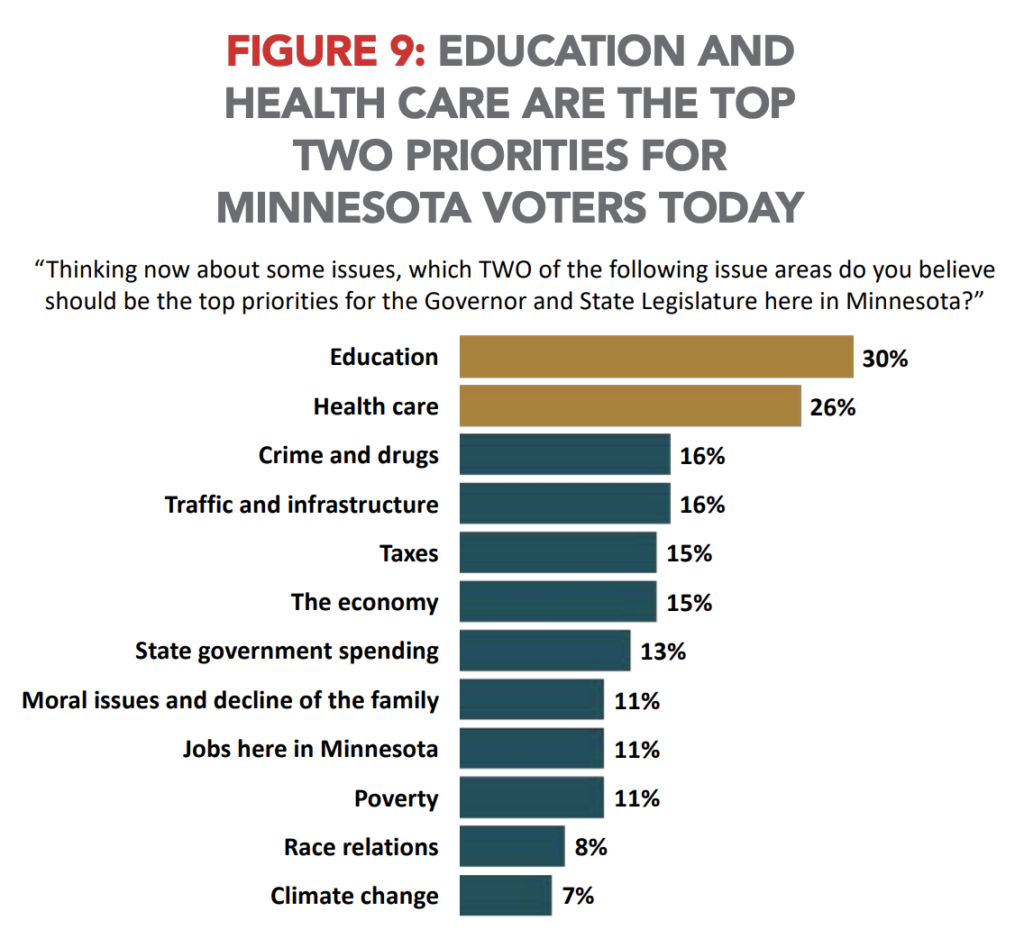Poll: Time for change
Amid profound partisan rifts, Minnesotans upend conventional wisdom with a strong and universal preference for the value of a tech school education.
As the state’s employers prepare to absorb the economic consequences of an unprecedented drop in the number of available workers (see page 22), a large majority of Minnesotans agree that young people are better served by obtaining skills for specific jobs than by earning a four-year degree. Just 25 percent of the respondents in the first-ever Thinking Minnesota Poll preferred advising young people to get a four-year college degree (Figure 1). A whopping 66 percent preferred “obtaining specific skills.”
Meeting Street Research interviewed 500 registered voters between February 27 and March 1, 2018, through a mix of landline and cell phone calls. The margin of error is + or – 4.38 percent.
In a survey that in other ways revealed dramatic partisan disagreements, the “pro-skills” sentiment strikingly prevailed among every political, demographic and geographic category:
• Republicans (73 percent pro-skills-19 percent pro-degree), Independents (67-23), Democrats (59-31);
• Men with less college (70-20), men with college-plus (66-23), women with less college (67-22), women with college-plus (60-33); and
• Minneapolis/St. Paul (62-32), Suburbs (60-30), Northeast (75-21), West/Northwest (74-8), South (66-21).
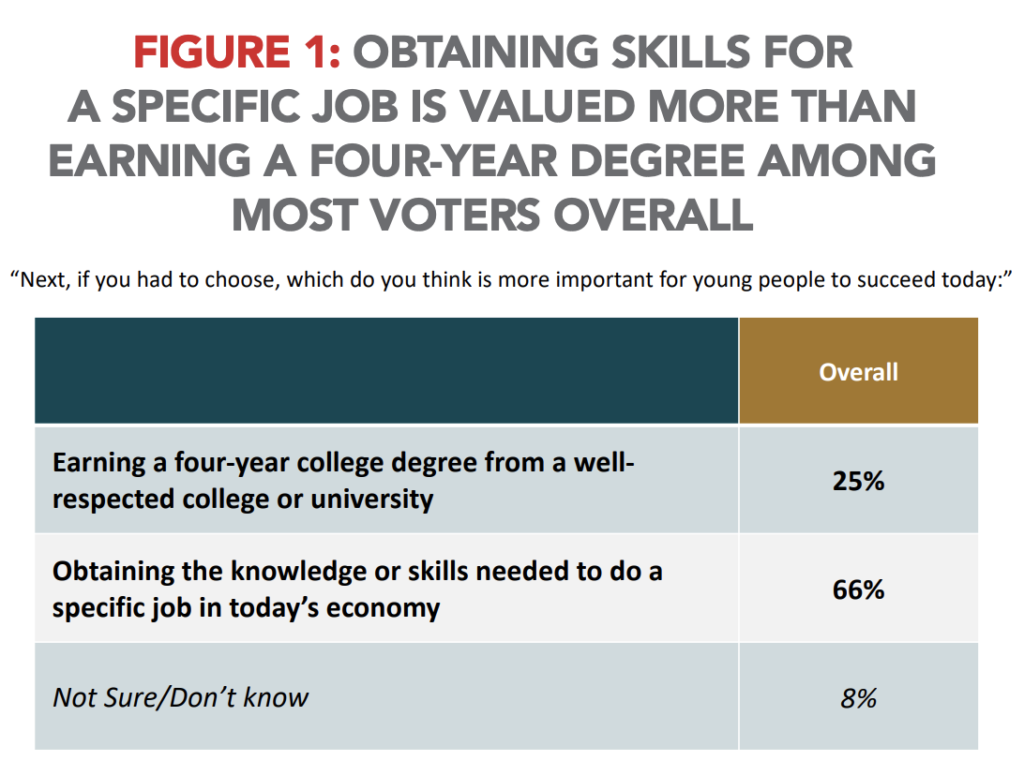
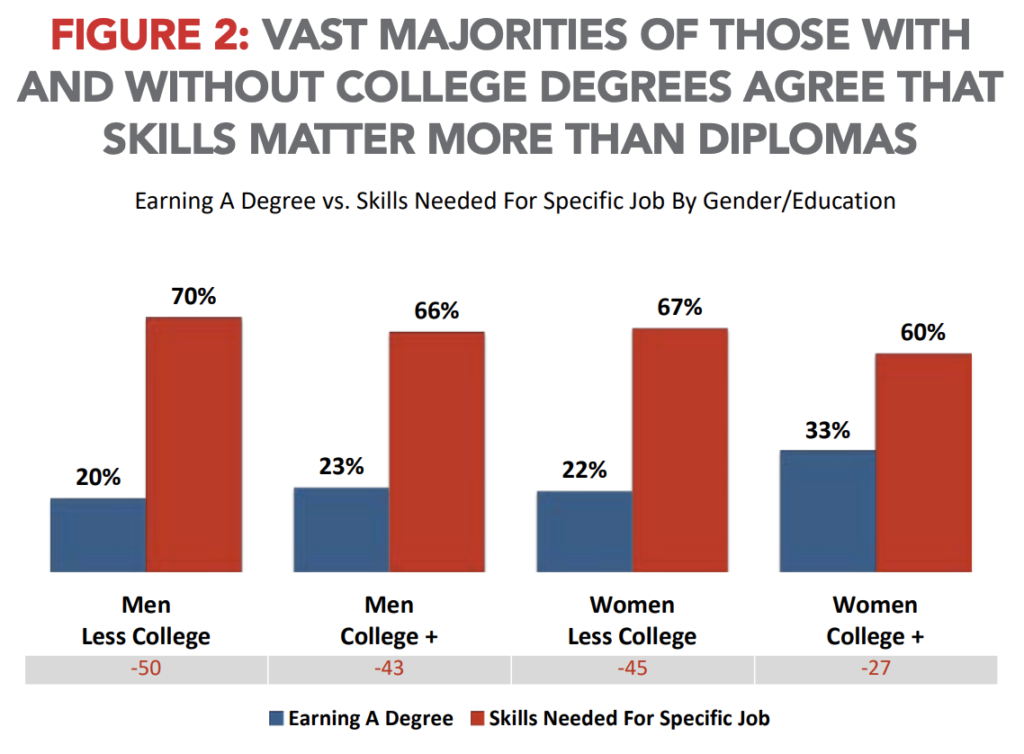
Similarly, only one in four Minnesotans believe a four-year college degree “is necessary to achieve the American Dream.” This opinion also prevailed among political, geographic and demographic categories.
Most Minnesotans (56 percent) say their job does not require a college degree. Men and women who achieved a college degree say otherwise, 64-35 and 61-36, respectively.
Respondents agreed by a wide margin that apprenticeships and a technical associate’s degree or industry certification present a superior value for the money, over a four-year college degree or a master’s degree (Figure 4).
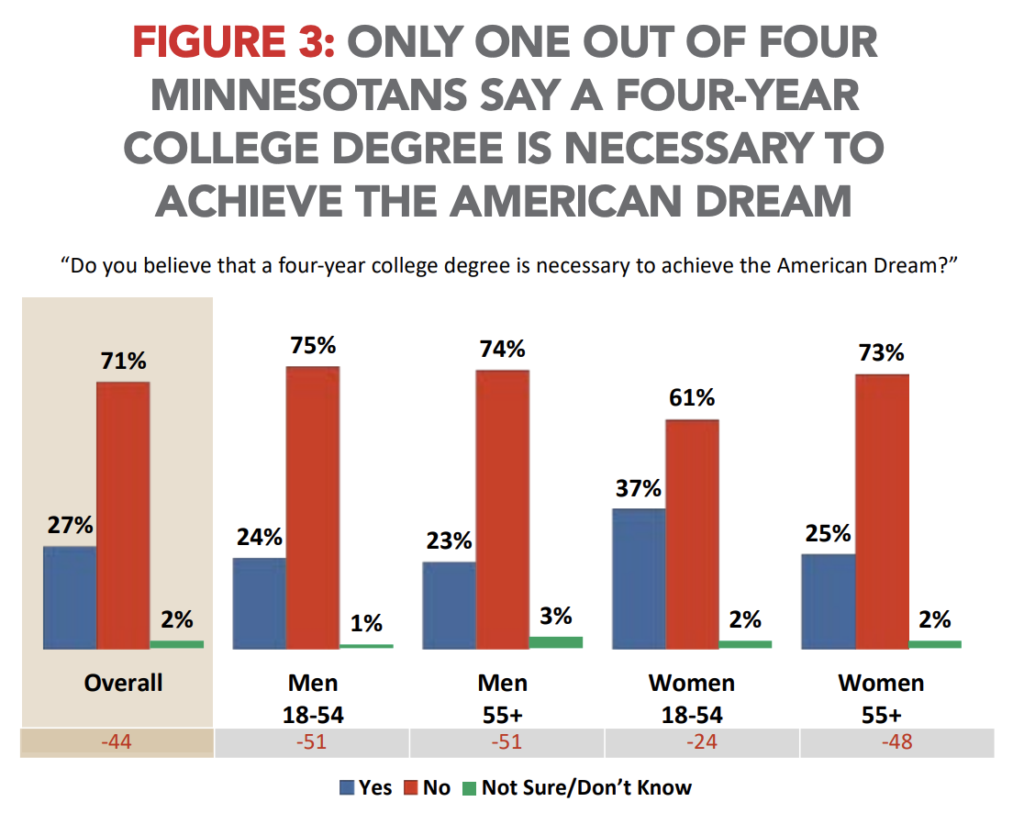
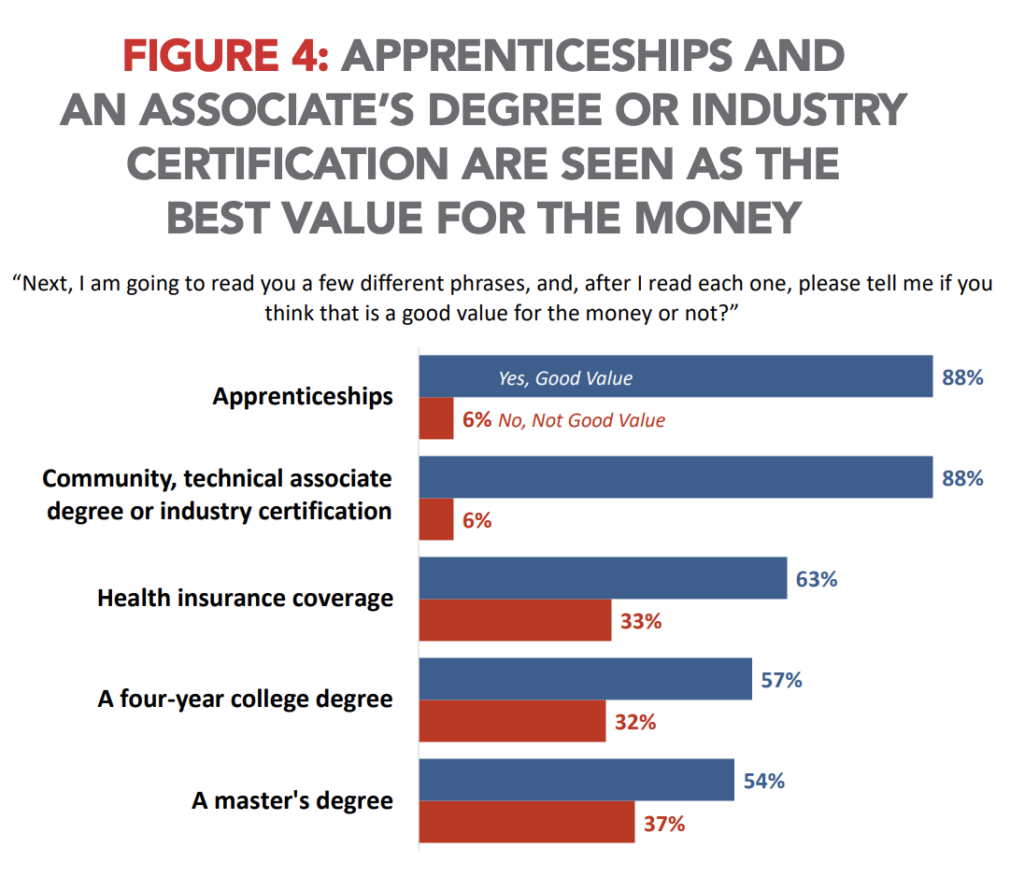
The Estate Tax
Minnesotans favor eliminating the state’s estate tax by 29 points, with wider margins from Republicans and Independents (Figure 5).
Older voters and younger men solidly favor eliminating the estate tax, but younger women are unsure. Men age 18 to 54 favor elimination by 59-18; men age 55-plus favor elimination 51-25; and women age 55-plus favor it 52-16. Women age 18 to 54 favor elimination 29-19, with 52 percent undecided.
A majority of Minnesotans outside Minneapolis/St. Paul all favor elimination: the Suburbs (50-24), the Northeast (54-12), the West/Northwest (52-14), and the South (50-16). Minneapolis/St. Paul residents support elimination of the estate tax 40-21, with 38 percent unsure.
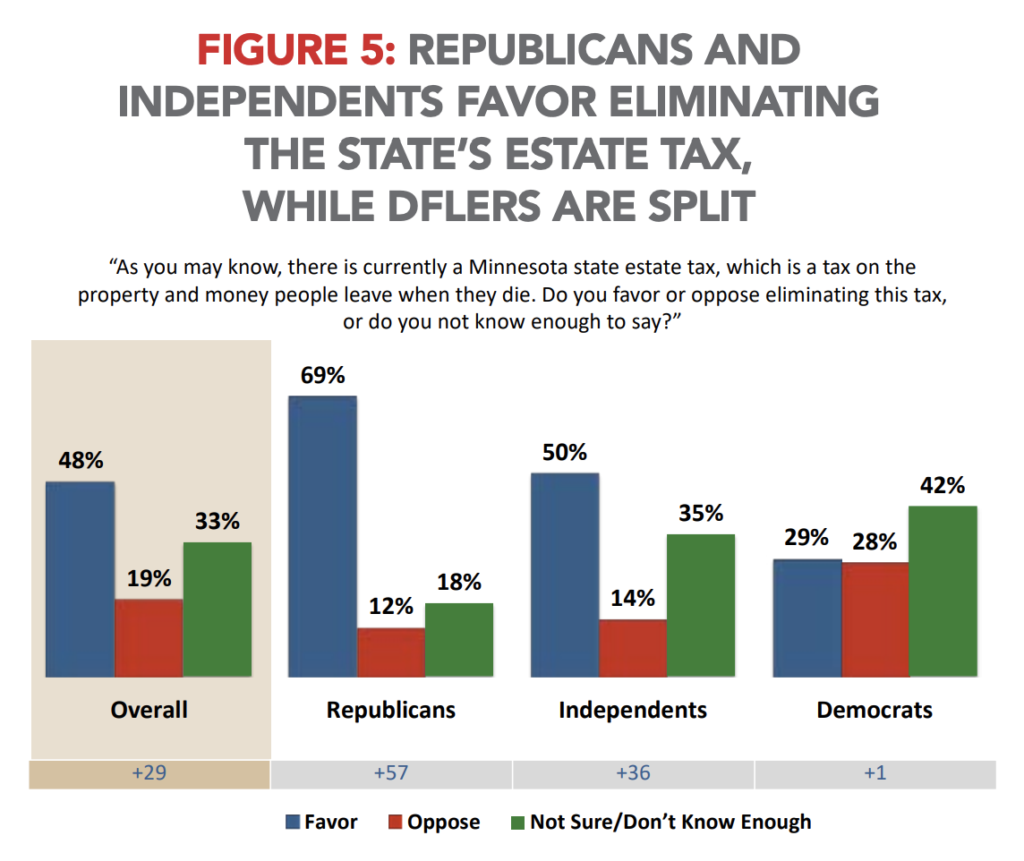
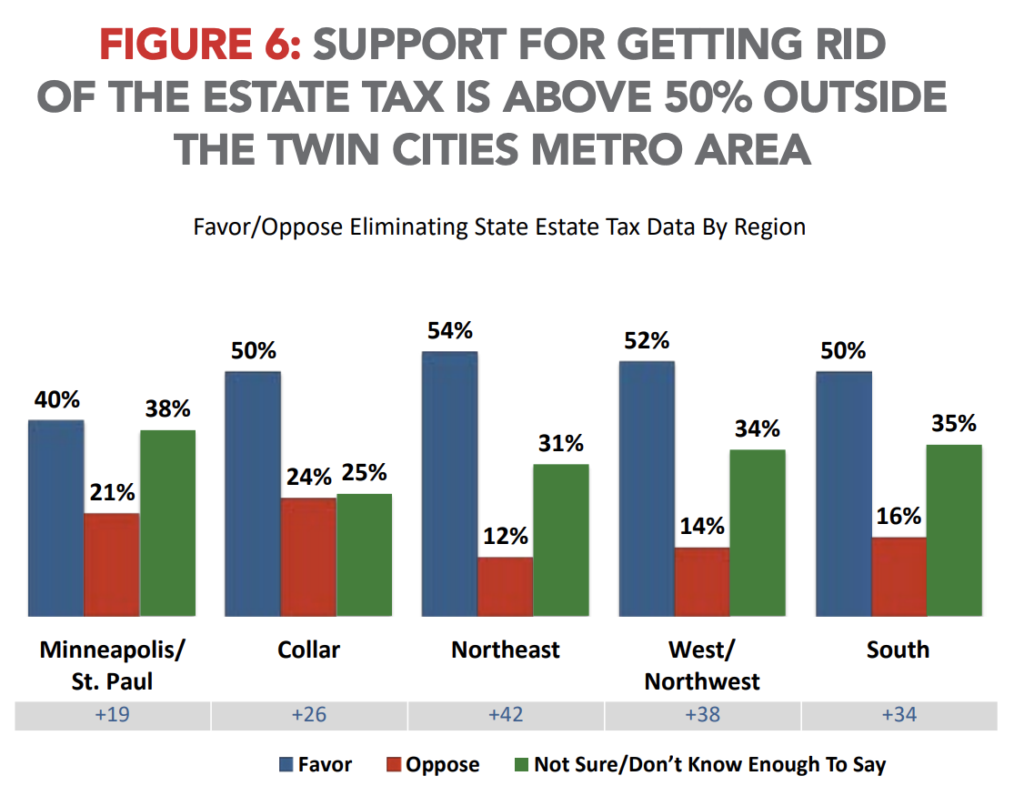
The Political Environment
Minnesota voters are much more positive about the direction of their state than they are of their country (Figure 7). But the breakdown of opinions inside those numbers exposes a sharply divided electorate. Democrats and Republicans describe the health of their nation and their state in dramatically different terms.
In what are commonly described as “right track/wrong track” questions, just six percent of Democrats view the nation as going in the right direction, while 93 percent say wrong track. They view the state in opposite terms, with a 79-10 right track/wrong track ratio.
Republicans, on the other hand, report a 57-34 positive view of the nation, while 43-45 ratio for the state.
The numbers are equally dramatic when viewed by geography. Residents of the Twin Cities report a 21-66 ratio for the nation and 67-19 for the state. Voters in the south are even more unhappy, with a 16-73 ratio for the nation, and 68- 21 for the state.

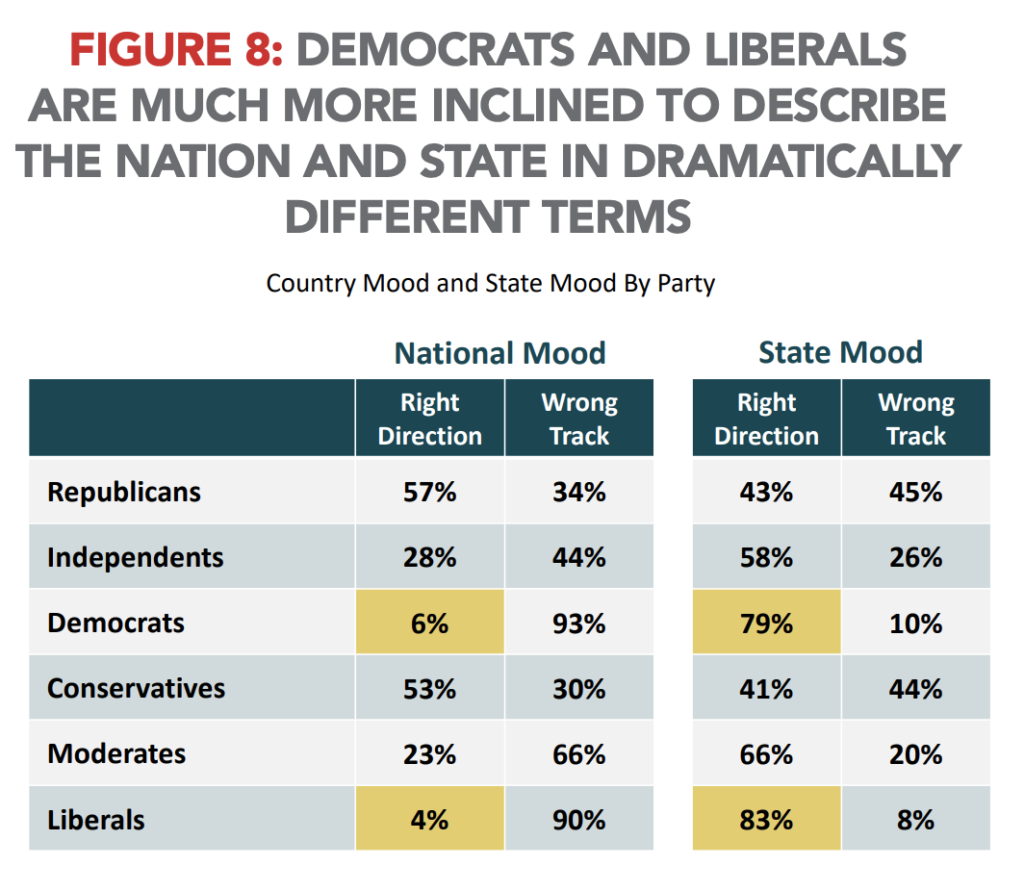
These differences are just as stark with opinions about President Donald Trump. Overall, 36 percent of Minnesotans approve of the job the president is doing, 53 percent disapprove. His approvals are worse in the Twin Cities (26-64) and the South (27-61). He performs better in the Suburbs (41-52) and the Northeast (46-48), and his approval shows a 15 percent positive margin in the West/Northwest (48-33).
It will surprise no one that the president’s highest support comes from Republicans (75-15) and conservatives (71-16), while his harshest critics are among Democrats (4-92) and liberals (5-90).
There is a pronounced gender gap in the president’s approval, most notably among women, age 18 to 54, where it is 15-67. It is slightly better among women 55-plus, where it is 34-56.
